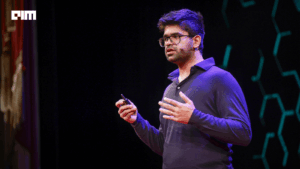When GPT-5 debuted last week, Michael Truell, cofounder and CEO of Anysphere, was on OpenAI’s release stream calling the model “incredibly smart.” Within minutes, GPT-5 was live in Cursor, the company’s flagship AI coding environment.
Cursor’s engineers say GPT-5 is one of the most steerable models they’ve used, capable of tackling “complex bugs other models couldn’t figure out” and generating correct backend and frontend code in one shot. The model’s longer task coherence and improved tool-calling fit directly into Cursor’s push to let developers hand off bigger chunks of work to autonomous agents.
“We’re getting to a world where more and more of programming is moving toward delegating your work to a bunch of helpers in parallel,” Truell told the Decoder podcast.
Growth at Any Cost?
Cursor has blown past $500 million in annualized revenue as of a few months ago. Valuation chatter has already leapt from $10 billion in June to potential offers twice that.
Margins tell a different story. A subset of individual subscribers rack up heavy compute bills to Anthropic, its primary model supplier and a direct competitor. Enterprise contracts, which combine seat-based and usage-based pricing, are healthier, but the individual segment remains costly.
In July, the company moved from request-based allotments on its $20 plan to compute-based limits. The change confused and angered some users. “That definitely could have been communicated legions better,” Truell acknowledged in Decoder. Cline, an open-source rival, avoids this kind of margin pressure by routing all usage through developer-supplied API keys and charging nothing on inference, though it has yet to match Cursor’s scale.
Shifting Gears with GPT-5
GPT-5 brings better multi-step reasoning, fewer tool-calling errors, and the ability to chain dozens of calls without losing context. For Cursor, deeper integration with OpenAI’s models could reduce dependence on Anthropic while giving the product an edge in agentic workflows.
Engineers have been using GPT-5 for long-running background agents, complex database optimizations, and end-to-end builds that span multiple submodules. “It’s the smartest model we’ve used,” Truell told OpenAI, “remarkably intelligent, easy to steer, and even has a personality we haven’t seen in other models.”
Truell isn’t promising a quick march to full automation. “I think it’s going to take decades,” he said on Decoder. “There’s this urge to anthropomorphize these models… and then think that they will just kind of be great at everything. I really think it’s this very jagged peak.”
The Road to Agent-First Development
In Cursor’s vision, coding tools will evolve from passive assistants into orchestration hubs where multiple agents run in parallel, passing work between one another without constant human prompts. GPT-5’s expanded context window allows these agents to hold more of a project in memory, reducing the handoffs and “lost in translation” errors that plague long-running AI processes today.
That shift could change the economics of software development. Instead of scaling output linearly with headcount, companies could build teams where each developer oversees a set of specialized agents, managing architecture and reviewing output rather than writing every line themselves.
The company is already experimenting with enterprise-only features for managing fleets of agents across projects, including permission controls, audit logs, and integration hooks for deployment pipelines. These features are designed to make AI delegation less of an experiment and more of a standard operating procedure.
Cursor’s next step is to expand GPT-5-powered agents beyond the IDE, weaving them deeper into enterprise workflows for testing, deployment, and monitoring. The company is also building tooling to coordinate multiple agents on parallel tasks, aiming to push delegation from 20 percent toward the 50 percent mark Truell has described. Competing tools are already racing to match GPT-5 integrations, and if Cursor can’t pair its technical advances with a fix for its high-cost user base, faster imitators could narrow the gap.











